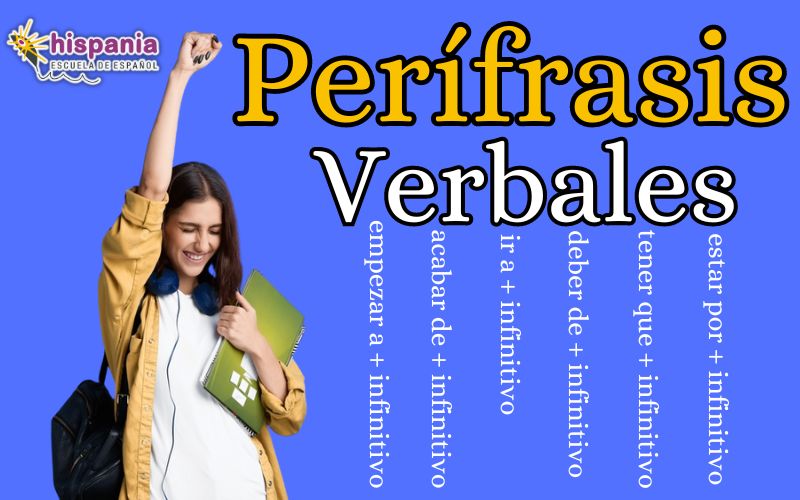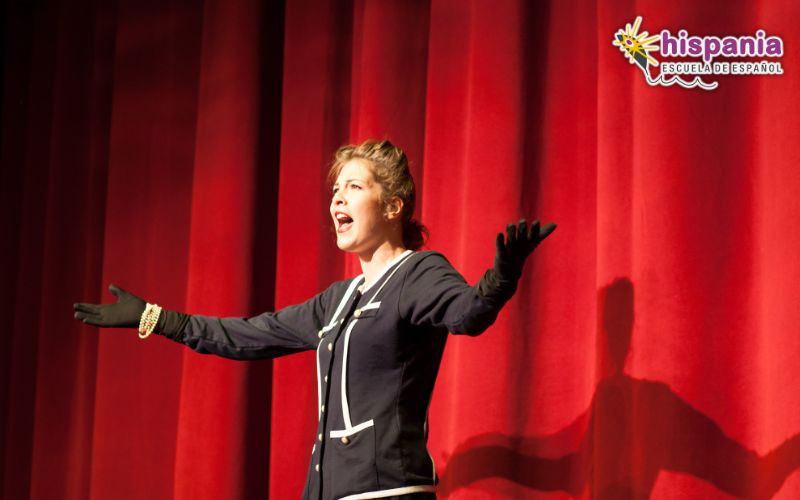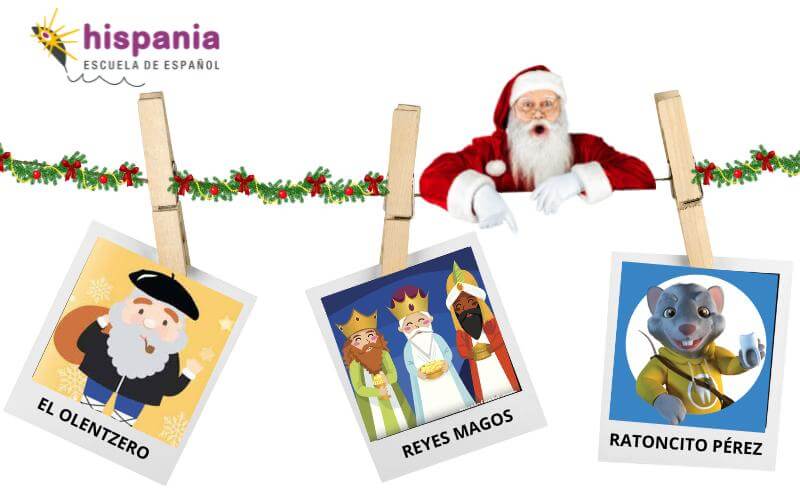
Who brings gifts to children in Spain? The Three Wise Men, Santa Claus and other magical Spanish characters
We start January with enthusiasm! The beginning of the first month of the year is very exciting for the Spanish. You know why?
Because they come the three wise men to bring gifts to the kids. 🎁👶
In this article we are going to delve into the tradition of the Magi and other characters that bring gifts to children in Spainsuch as, Papai Noel, the tooth fairy, the Olentzero and many more.
I hope you have written letter to the Magi in perfect Spanish. 😁
¡Empezamos!
Los Reyes Magos - The Three Wise Men
we start by the three wise men, the most famous and beloved magical characters in Spain.
Tradition of the Magi and the gifts
Would you be interested in knowing what the origin of the Magi?
His first appearance is in the Gospel of Saint Matthew. In it, it is said that some magicians were sent to Bethlehem guided by a star worship baby jesus who had just been born and bring him gifts.
It is curious because, in reality, in the Gospel it is not literally said that there were three Kings.
This number was adopted in relation to the Holy Trinity and the number of gifts they brought to the baby, which were three.
Do you know what these were? gifts of the Magi? Gold, frankincense and myrrh.
What is the myrrh of the Magi?
Myrrh is like little stones that give off a very pleasant aroma, just like incense. Both are said to have very good health properties.
Do you think they are good gifts? Maybe nowadays it would be a little weird to give that to a child. 😄
Another interesting fact about the origin of the Magi is that the term "wizards" in the Gospel of Saint Matthew referred to the astrologers.
It was not the image of wizards that we have today as in fairy tales or Harry Potter. 🧙(I.e.️
The Magi were actually astrologers, that's why they knew how to guide themselves with the stars. Interesting! TRUE?
On the middle ages, the legend of the Magi was taking a new shape, providing the names, mythology, symbols and appearance that we grant them to this day.
Letter to the Magi
Currently, the Three wise men are christmas characters most loved by Spanish children. They are the ones who bring the main gifts.
How do the Kings know what gifts each boy and girl wants? That's what the letters to the Magi.
In December, before Christmas begins, the children write their letters.
On these letters, the children should write the date, their names and the list things to ask the Magi.
And very important! They must express that this year they have behaved well, since if not, they will not receive their desired gifts. 😇
The way that exists to send the letters to the Kings is through the mailbox of the Magi. Every year, Correos installs special mailboxes throughout the country that send letters to the Three Wise Men.
If your children have written the letter to the Kings, look for these mailboxes. They can also be sent virtually. Although in physical format it has more charm, don't you think? 🪄
What are the gifts to ask the Magi more typical?
Normally, Spanish children ask for toys.
The January 6 es When do the Magi bring gifts?. This is the most exciting day of the year for Spanish children.
It's called the Three Kings Day. the Kings leave the gifts on the Christmas tree in each house and leave.
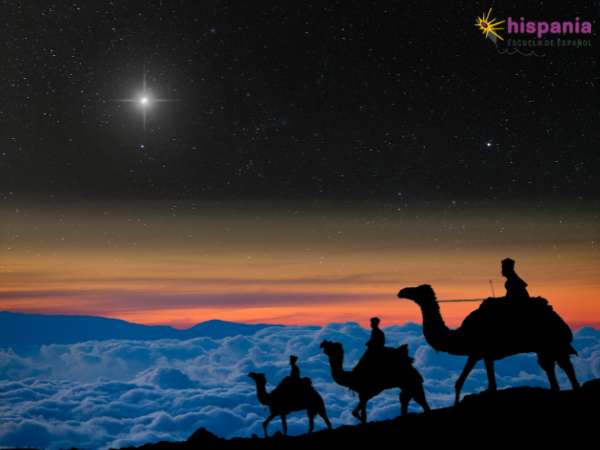
When do the Three Wise Men come?
What day do the Magi come? They arrive in Spain the January 5, one day before delivering the gifts.
Do you know how they come? On their camels, of course.
On the night of January 5, the children provide food and water for these animals, as a token of appreciation. (I.e.
Addition camels of the Magi, other symbolic elements of these are their layers of colors and the crowns.
If you give pictures of the MagiI'm sure you'll recognize them.
What are the Three Wise Men called?
I haven't introduced them yet! What a mistake on my part.
The names on the day of the Magi are Melchor, Gaspar and Baltasar.
AND, Where they are the three wise men?
At first their nationality was not exactly mentioned, it was simply said that they were "Los Reyes Magos de Oriente. "
However, in a XNUMXth century apocryphal gospel it was pointed out that Melchor was from Persia, Gaspar from India and Baltasar from Arabia.
Cavalcade of the Three Wise Men
As we have said before, the day January 5 of each year the Kings arrive in Spain from the East. Maybe you are wondering:
"What traditions are there that day in Spain?"
«Where are the Three Wise Men celebrated? exactly?"
The main event on January 5 is the Cavalcade of the Magi.
A ride is a parade formed by people and floats that move through the streets.
the parade of kings It is done in all the provinces of Spain. In it, the Kings, their pages and other characters walk through the main streets.
The families stand in front of the floats to greet the Kings and their pages and to collect the candies that they throw at them.
It's a really fun event, especially when people drop to the ground to get the candy.
Sometimes it is the parents, instead of the children, who are most eager to take candy. 🤣
In which countries are the Three Wise Men celebrated?
Three Kings Day is a much-loved celebration in Spain. But we are not the only country that receives them.
En Europe; Italy, Portugal, France, Germany, Poland, Belgium and Austria also celebrate them.
What's more, it is said that the bodies of the original Magi are buried in the cathedral of Cologne, Germany.
En Latin America the Kings go to Venezuela, Colombia, the Dominican Republic, Argentina, Mexico, Uruguay, Puerto Rico, Paraguay and Cuba.
These countries have the tradition of the Kings for the Spanish influence they received in the past.
The same is true in Asia with Philippines, a country that also celebrates the Three Wise Men.
Of all these countries, Spain is surely the country that most venerates the arrival of the Three Wise Men.
So, if you're here at Christmas, you can't miss this moment! 😊
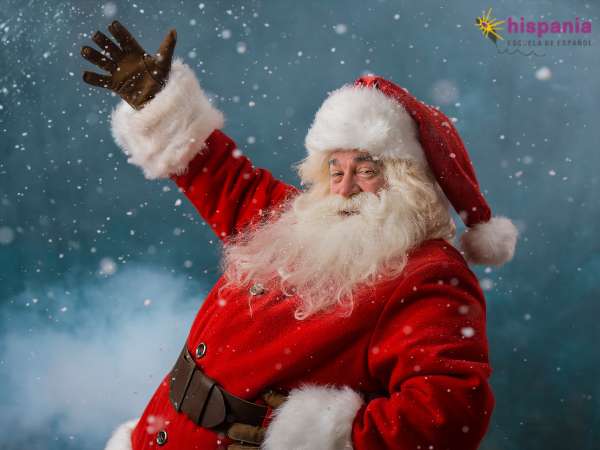
Papai Noel
We continue with the next great character that brings Christmas gifts in Spain: Papai Noel. ????
In case you don't know, Santa Claus is Santa Claus: that nice chubby bearded gentleman, dressed in red and white who brings gifts on his sleigh to the children.
Where does Santa Claus live?
It is said that Santa Claus lives in the city of Rovaniemi, in Finland, very close to the Arctic Circle. There he lives with his assistants.
Who helps Santa Claus? the nice ones elves. If it weren't for them, Santa Claus with gifts I just couldn't do all the work.
Although it may be interesting to clarify that this version of Santa Claus has been around since the XNUMXth century.
The real Santa Claus is inspired by San Nicolás, greek bishop who lived in the XNUMXrd and XNUMXth centuries.
It is said that this bishop He wasn't fat, he wasn't kind, he didn't wear red clothes, he didn't live in the arctic, he didn't fly around the cities on flying reindeer. 😝
So why did the character Santa Claus derive from Saint Nicholas?
Because this was named as the children pattern due to two important events in his life in which he saved several children from death and other evils.
Letter to Santa Claus
As with the Three Wise Men, Spanish children write a similar letter and send it in a mailbox for santa claus.
In the letter, they also say that they have been good and ask for the gifts they want.
En Spain, Santa Claus is not as popular as the Three Wise Men, not all children write the letter.
Although there are some lucky ones who receive the Gifts Papai Noel and also of the Reyes. 😁
When is Santa Claus coming?
On the Nochebuena / Christmas Eve of each year, the day 24st of Decemberit's when the santa claus gifts.
The children must leave the open stocking near the Christmas tree so that Santa Claus can put his gifts there. They can also leave some food and water for Santa's reindeer.
What are Santa's reindeer called?
In case you are curious, I am going to tell you the reindeer names of Santa Claus in Spanish.
El Santa's sleigh is carried by nine reindeer magical.
These are called: Thunder, Lightning, Playful, Cupid, Comet, Cheerful, Dancer, Jumping and Rodolfo.
What pretty names! With just the name you can already get an idea of the personality of each reindeer.
Did you know that the appearance of these reindeer arose for the first time in a poem of 1823?
This poem was written by the American Clement C. Moore and it was called A visit of St. Nicholas.
In it, Santa Claus was introduced for the first time as we know him today: from the Arctic pole, with the red dress, the reindeer and the sleigh loaded with gifts.
Other Spanish magical characters
Apart from the Three Wise Men and Santa Claus, in Spain we have other magical characters who bring gifts.
Do you want to meet them? Let's go there!
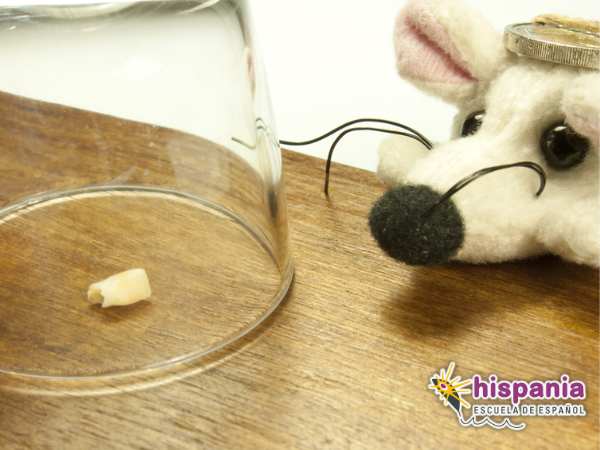
Little Mouse Perez
The origin of this nice character comes from the story written in France in the XVIII century: La Bonne Petite Souris (The good little mouse).
The legend of Little Mouse Perez has spread to others countries of Europe y from Latin America.
The Little Mouse Pérez is the only character in this article who does not bring gifts at Christmas, but rather when children lose a tooth.
In Spain, the original tale had its adaptation in 1894 by the writer Luis Coloma.
At tale of the tooth fairy, this character he took the teeth that fell out of the children and in return he left them a small gift: candy or money.
AND, what does the tooth fairy do with his teeth?
Well, it turns out that the Pérez Mouse is a mouse dentist, and so that the older miceianyou can eat the delicious Christmas sweets, he puts these baby teeth that children drop.
Therefore, when children lose a milk tooth, they do the following:
- They write the letter from the tooth fairy saying that they have lost a tooth and the gift they would like to receive in return.
- They leave the tooth under the pillow and go to sleep.
- The next day they find their gifts of the tooth fairy next to his bedside table.
And wow! The tooth is gone. The Little Mouse Pérez has taken it. 😁
He is an endearing character, isn't he? 😍🐁
Well, best of all, I'm going to tell you home where the tooth fairy lives in Spain, so that you can visit it and take a picture of it.
The house of the little mouse Pérez is in Madrid. At the entrance to the Bank of Spain metro station, you will see a small door with bars.
There's her house, I don't think you can go in because she's a dwarf, but at least you'll be able to see her. 😉
Another curiosity! Did you know we have a Pérez Mouse Museum in Valencia very interesting?
It's called the Old Tooth Warehouse, and in it the stories of the famous little mouse are narrated with puppet shows.
If you have small children and you are in Valencia, you already have a plan to spend the afternoon!
the esteru
En Cantabria they also have their own Cantabrian Santa Clauscalled el esteru.
Characterized as a lord calm and good-naturedIs a woodcutter exceeding make toys out of wood to give it to children on Three Kings Day.
He is always accompanied by his donkey the donkey and has its own ride since the late nineties.
This endearing lumberjack always carries a bereta kite and bushy beard.
The Applicator
Another magical character that brings gifts in Spain is the Galician applicator.
Who is the Applicator?
This is a Galician chickadee that between December 24 and 31 of each year goes to Galician cities and towns to check if children eat well.
How do you check? She does it by touching their belly.
Hence the term "toucher", which comes from the verb feel and it means to touch a thing or a person to examine it, as doctors do.
If the children are good eaters, the Toucher gives them chestnuts and other gifts.
What do you think of the character? appaler and his legend?
I find it very funny. 😁
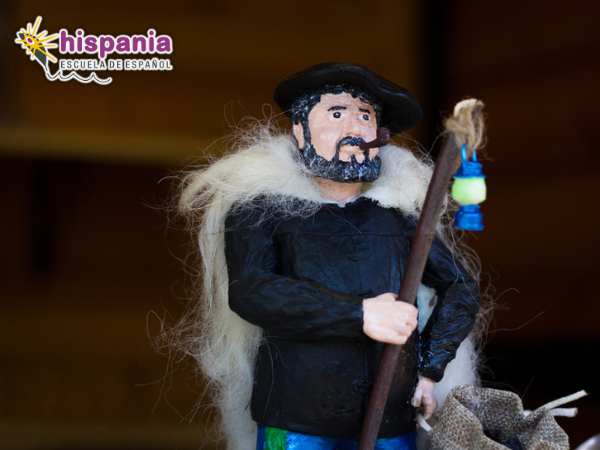
the Olentzero
Who is the Olentzero? Well, it's something like basque santa clausAnd also Navarrese.
La legend of the Olentzero began to spread from the 70 years.
His appearance is different from the traditional Santa Claus. He dresses like a typical Basque peasant, and also has a beard, although it is brown in color.
Where does the Olentzero live?
lives in the mountains(or the Iberian Peninsula as we like to call it), next to town of basoa, within Vizcaya.
work making coal, and he loves it eat and drink, hence his big belly. In this he does look like Santa Claus. 😁
Mari Domingi
From the 90 years, olentzero another was added magical character who brought gifts to the children: Mari Domingi.
Mari Domingi comes from a Christmas folk song collected by Resurrección María de Azkue at the beginning of the XNUMXth century.
She is a witch and shepherdess of the earth, a good connoisseur of the path of the sun, the different lunar stages and the use of medicinal plants.
Her favorite gifts are handmade, made with natural elements such as stones, flowers, wood or wool.
El olentzero y Mari Domingi they are neighbours and together They are in charge of bringing the gifts to all the children and girls tasks in the Basque Country and Navarre in the Día de Navidad / Christmas day, on December 25.
Angulero or L'Anguleru
At north of Spain there is a long fishing tradition, since its regions are located on the seashore.
The shellfish and fish They are a very important part of gastronomy in the north of Spain.
To render tribute to fishermen, in the autonomous community of Asturias, we have at Asturian Santa Clausiano: El Asturian Angler.
The Angulero is an eel fisherman. He is dressed in the traditional yellow fisherman's raincoat, with wellies and a wool cap.
On Christmas Eve, all Asturian childrenianThey want to receive the Angulero's gifts.
For this, they have to leave a wool hat with food and drink under the Christmas tree as a gift for the Angulero.
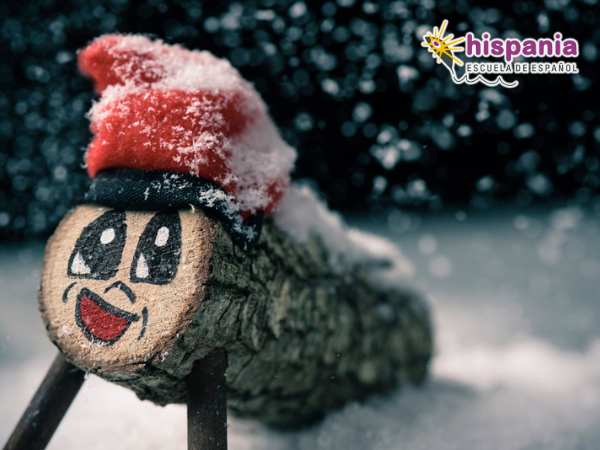
Nadal's uncle
We arrived at last character and which is, in my opinion, the most curious legend of all.
This character is from Catalonia. ¿Nadal's uncle is then the Catalan Santa Claus?
Not quite. Nadal's uncle is built with a piece of trunk and some long pieces of wood that serve as legs.
A smiley face is drawn on the trunk. They cover it with a blanket and the children give him food from the beginning of Advent until Christmas Eve.
December 24th is the day that Tió de Nadal gives his gifts. I eat? This is the part that fascinates me the most.
The children beat him with sticks while singing a song that asks him to do nougat poop.
Yes, you heard right. She had Nadal shit nougat. 💩🍫
Don't take it too seriously, it's just a figure of speech. ????
After finishing the song, under the blanket from Tió de Nadal there is no poop, only nougats or other gifts.
Did you like this legend? And the other ones?
As you can see, in Spain we have a long mythology around the magical characters of Christmas.
The Three Wise Men and Santa Claus are the most famous and are celebrated all over the country.
Don't forget the others though. local charactersThey are part of our culture and make Spain an even richer and more charming country.
Want to to learn Spanish and learn more about our traditions?
I encourage you to come to Valencia to our face-to-face Spanish courses en Hispania, escuela de español.
Here you will learn Spanish with very professional teachers and many classmates from all over the world.
If you are interested in Spanish History and legends, we also have many cultural activities and tours with a specialized guide in Valencia in which you will learn about these topics.
More into learn spanish remotely from your house?
You can also do it with our online Spanish courses. 😉
And now, tell me:Who brings Christmas presents in your country? Are there as many characters as in Spain?
Tell me in Comments. 😊
¡Hasta pronto!
Article written by Carlos Martínez for Hispania, escuela de español
More articles

